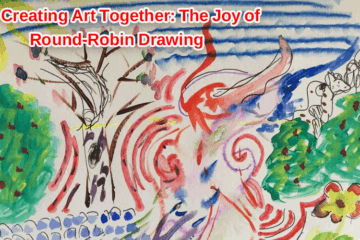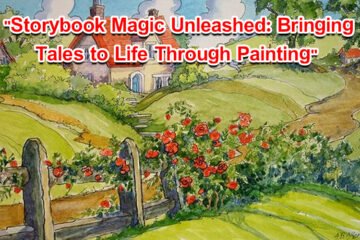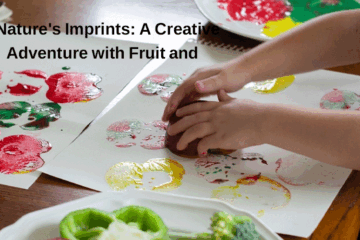In the world of art, there’s something uniquely mesmerizing about the interplay of light and shadow. Silhouette landscape painting, a masterful fusion of minimalism and beauty, harnesses this interplay to evoke emotions, tell stories, and transport viewers to captivating scenes bathed in the magic of twilight. This artistic approach invites us to explore landscapes in a way that goes beyond the traditional and delves into the realm of the evocative and enchanting.
Unveiling the Aesthetic Allure
Silhouette landscape painting centers around the stark contrast between the solid, dark shapes of the foreground and the colorful or textured backgrounds. It’s a celebration of shapes, forms, and the silent drama that unfolds during the transition from day to night. Through this technique, artists are able to create landscapes that capture a moment of serene beauty.
The Elements of Silhouette Landscape Painting
1. Foreground Elements: The core of a silhouette landscape is the distinct shape of the objects in the foreground. This could be trees, mountains, animals, people, or anything else that adds depth and character to the scene.
2. Background Magic: While the foreground is intentionally kept as a solid silhouette, the background serves as a canvas for imaginative exploration. It can be a sunset ablaze with warm colors, a serene moonlit night, or even an abstract blend of hues that sets the mood.
3. Contrast and Balance: The allure of silhouette landscapes hinges on the contrast between the dark foreground and the vibrant background. This contrast creates a balance that draws the eye while allowing the viewer to appreciate the interplay of light and shadow.
4. Emotion and Storytelling: Silhouette landscapes have a remarkable capacity to convey emotions and narratives through the combination of forms and hues. An isolated tree against a setting sun can evoke feelings of solitude, while a couple walking hand in hand can tell a romantic tale.
5. Minimalism and Imagination: By focusing on essential forms and stripping away intricate details, silhouette landscape painting encourages viewers to use their imagination to fill in the blanks, making each artwork a personal and evocative experience.
Creating Your Silhouette Landscape
Here’s how you can embark on your journey to create a stunning silhouette landscape painting:
- Select Your Scene: Choose a landscape that resonates with you. It could be a seascape, a mountain range, a serene lake, or an urban cityscape.
- Compose the Foreground: Determine the silhouette elements that will occupy your foreground. Consider the size, placement, and arrangement of these forms.
- Background Harmony: Plan the colors and mood of your background. Will it be a fiery sunset, a tranquil night sky, or something entirely imaginative?
- Create the Silhouette: Paint the forms of the foreground using a solid, dark color. You can use black or experiment with deep hues like dark blue or rich brown.
- Background Magic: Build the background by layering colors to create the desired atmosphere. Blend colors skillfully to evoke the desired emotional response.
- Balance and Contrast: Ensure that the silhouette elements stand out distinctly against the background. The contrast is what lends the artwork its captivating allure.
- Finishing Touches: Once your painting is dry, make any necessary adjustments and refine the details. Sign your artwork with pride, for you’ve captured a fleeting moment in time.
Beyond the Canvas: Conveying Stories and Emotions
Silhouette landscape painting goes beyond the physical canvas, inviting viewers to immerse themselves in a world of emotions and stories. The simplicity of this technique holds the power to evoke feelings of tranquility, awe, solitude, and even adventure. As you embark on your artistic journey, remember that each brushstroke holds the potential to transform a blank canvas into a captivating vista that invites viewers to pause, reflect, and appreciate the beauty that can be found in the dance between light and shadow.





